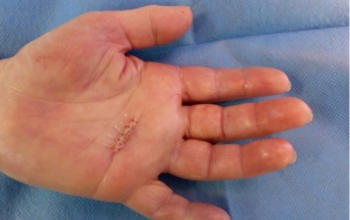The fingers and the wrist are dextrous and mobile because of tendons. The tendons work the hand a bit like puppet-strings so they are continuously on the move, sliding backwards and forwards many times a day. This can cause wear and inflammation 'tendinitis'.
Most commonly this occurs in the palm of the hand adjacent to the 'heart-line' and 'head-line' (creases). In this zone the tendons enter a narrow tunnel and it is at this point where the tendon rubs and inflammation typically develops. Pain is the first symptom and this may be followed by a catching sensation where the finger seems to become stuck in the bent position and requires some effort and help to straighten it - this may happen with a 'clunk' or a 'snap' and some further pain - the clunking sensation gives the condition its name: Trigger Finger. Typically this is most troublesome in the mornings.
An injection of steroid into the affected finger is usually effective. In some cases the condition is relieved only for a few months whilst in others relief is much longer lasting. If the problem persists, a small operation is recommended. This is an awake day-case (local anaesthetic) operation and patients can return to normal activities soon after treatment. The operation makes a small cut in the palm and opens up the narrow tunnel at the base of the finger so the tendon no longer rubs on it.
In De Quervain's tendinitis the affected tendon is on the thumb-side of the wrist. Here again there is a tendon which rubs and becomes inflamed and painful. Rest and hand therapy are often helpful initially. A surgical release under local anaesthetic may be required if the condition is resistant to treatment splints or with steroid injections.
Before
After

